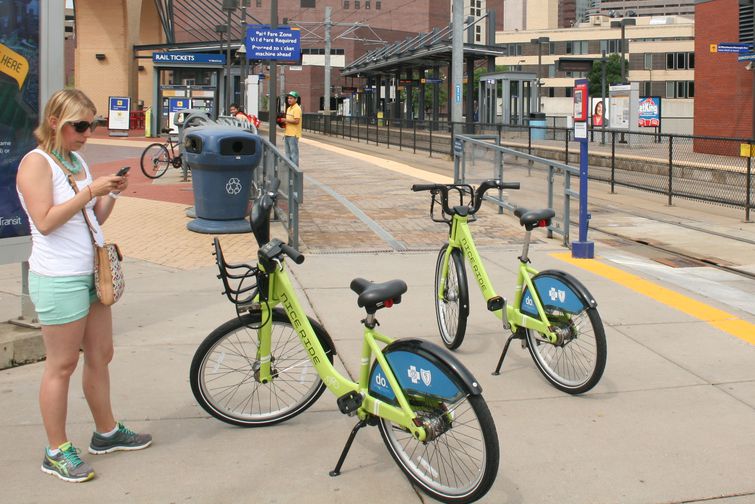Bicycle sharing systems have been spreading like wildfire over the past few years, with new initiatives in
New York and Chicago bringing the idea to America's biggest cities. But even
the oldest such systems aren't very old, so we're still learning a lot about
how they work. One striking finding of a major new report from the
Mineta Institute at San Jose State University is that bike shares cater
disproportionately to the rich. At least they do in the four major
established systems in the US and Canada that the report examined. For
each city, this table shows two different populations. In the left column, you
get the share of the city's total population that belongs to each income
bracket. In the right column, you get the share of the city's total bike share
membership that belongs to each income bracket. In all four cities, you see
that low income cohorts are a lower share of the bikeshare population than they
are of the total population. In the high income cohorts it's the opposite. 17
percent of Salt Lake City bike share members earn over $150,000 a year, even
though such well-to-do individuals are only 8 percent of the city's total
population. Read on
here.
Portland’s Alameda Bike Bus Turns One!
-
On Earth Day 2022, Physical Education teacher Sam Balto - inspired by
Barcelona's Bici Bus - decided to attempt to start his own at his school in
Alameda n...
2 years ago

No comments:
Post a Comment